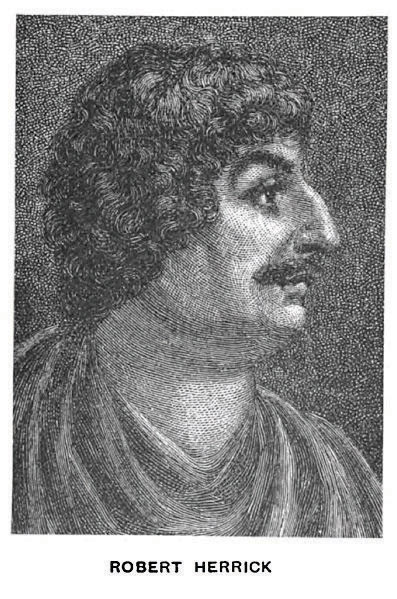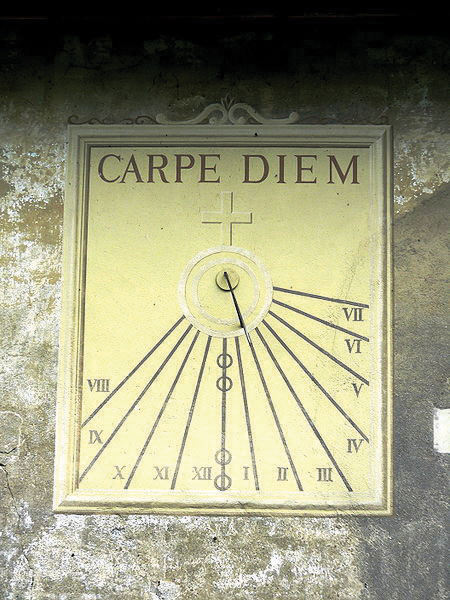This is “Robert Herrick (1591–1674)”, section 4.4 from the book British Literature Through History (v. 0.1). For details on it (including licensing), click here.
For more information on the source of this book, or why it is available for free, please see the project's home page. You can browse or download additional books there. To download a .zip file containing this book to use offline, simply click here.
4.4 Robert Herrick (1591–1674)
PLEASE NOTE: This book is currently in draft form; material is not final.
Learning Objectives
- Identify Robert Herrick as a cavalier poet.
- Recognize the carpe diem tradition in Herrick’s “To the Virgins.”
Biography
Robert Herrick is considered a cavalier poet, one of the followers of Charles I. In fact, coming from a middle class background, he enjoyed the patronage of several noblemen and was thus welcomed into court gatherings. As was common in England since the time of Chaucer, poets circulated their poetry in manuscript form for the amusement of the court. Poems written in honor of a specific nobleman or at the request of a nobleman as a memorial for a special occasion were often rewarded monetarily. Herrick’s poetry not only provided him with needed income from his patrons, it also made him a part of the courtly social and literary circles. After becoming an Anglican clergyman, Herrick served as chaplain to a high-ranking courtier. Soon after, however, King Charles I appointed him vicar of a church in Exeter, far from the social and literary life Herrick loved in London. After the execution of Charles I, Herrick lost his position as vicar under Cromwell’s rule and returned to London where he concentrated on publishing his poems. When Charles II was restored to the throne, Herrick’s job was also restored, and he spent the rest of his life as a vicar in Exeter.

“To the Virgins, to Make Much of Time”

Sundial on the side of a building in Yvoire, Haute-Savoie, France.
aewolf from Denver. Creative Commons Attribution 2.0 Generic license
To the Virgins, to Make Much of Time
Gather ye rosebuds while ye may,
Old time is still a-flying :
And this same flower that smiles to-day
To-morrow will be dying.
The glorious lamp of heaven, the sun,
The higher he’s a-getting,
The sooner will his race be run,
And nearer he’s to setting.
That age is best which is the first,
When youth and blood are warmer;
But being spent, the worse, and worst
Times still succeed the former.
Then be not coy, but use your time,
And while ye may go marry :
For having lost but once your prime
You may for ever tarry.

John William Waterhouse “Gather ye rose-buds, while ye may.”
As is typical of the Cavalier Poets, Herrick expresses the carpe diem, seize the day, philosophy in this poem, the philosophy that life is to be lived for today because tomorrow is uncertain. Unlike Marvell’s seduction poem, this poem specifically encourages young women to marry, not simply to engage in sexual activity for pleasure’s sake.
Herrick’s poem begins with the well-known lines, “Gather ye rosebuds while ye may, / Old time is still a-flying.” These lines embody the carpe diem philosophy: young women should make the most of their youth and loveliness because it won’t last long. Herrick emphasizes the transitory nature of youth and beauty as he compares the young women to flowers which bloom one day and wilt the next (lines 3–4). Noting that youth is the best age (lines 9–10), Herrick in the final stanza again urges the virgins to marry while they are young and desirable.
Key Takeaways
- Robert Herrick is an example of a cavalier poet.
- Herrick’s “To the Virgins” exemplifies the carpe diem tradition.
Exercises
- In the first stanza, the speaker directly addresses the young maidens, urging them to “gather [their] rosebuds” while they can and to be aware of time passing. The speaker is obviously referring to more than literally picking flowers. What does the admonition to gather rosebuds represent?
- What does the flower of line 3 represent?
- The second stanza pictures the sun racing across the sky to set at the end of the day. What does the passage of the day represent? How would you compare this use of sun imagery with that in Marvell’s “To His Coy Mistress”?
- The speaker claims that youth, the “first” part of a person’s life is the best because “youth and blood are warmer.” What does the speaker suggest with the reference to warm blood?
- What does the word coy mean in the last stanza? How would you compare Herrick’s use of the word coy with Marvell’s use of the word in “To His Coy Mistress”? What is the significance, in both poems, of young women being referred to as coy?
- What warning does the speaker have for the virgins in the last stanza?
- Compare and contrast how this poem and Marvell’s “To His Coy Mistress” depict the carpe diem philosophy.
Resources
Biography
- “Life of Herrick.” rpt. from Robert Herrick. The Works of Robert Herrick. Vol. I. Alfred W. Pollard, Ed. New York: Charles Scribner’s Sons, 1891. xv–xxvi.
- “Robert Herrick.” Anniina Jokinen. Luminarium.
- “Robert Herrick.” Poets.org. Academy of American Poets.
Text
- “To the Virgins, to Make Much of Time.” Anniina Jokinen. Luminarium.
- “To Virgins, to Make Much of Time.” Representative Poetry Online. Ian Lancashire. Department of English, University of Toronto. University of Toronto Libraries.
- “To the Virgins, to Make Much of Time.” A Selection from the Lyrical Poems of Robert Herrick. Francis Turner Palgrave, editor.
Audio
- “To the Virgins, to Make Much of Time.” LoudLit.org. Performer Argos MacCallum. Audio Engineer Warren Smith.
- “To the Virgins, to Make Much of Time.” Short Poetry Collection 019. LibriVox.




